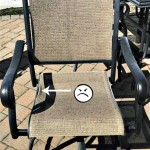How to Build a Pea Gravel Patio on Varied Sloped Ground
Constructing a pea gravel patio on sloped ground presents unique challenges compared to building on a level surface. The inherent instability of loose gravel combined with the force of gravity acting on the slope requires careful planning, robust construction techniques, and a thorough understanding of drainage principles. This article outlines the process of building a durable and aesthetically pleasing pea gravel patio on ground with vari varying slopes.
The success of a pea gravel patio on sloped terrain hinges on effectively managing water runoff and preventing gravel migration. Failure to address these issues will inevitably result in erosion, an uneven surface, and the patio's eventual disintegration. The following steps detail the process, emphasizing necessary adaptations for sloped conditions.
Planning and Preparation: Assessing the Slope and Determining Drainage
The initial phase involves a comprehensive assessment of the slope. This includes determining the grade (rise over run) at different points across the intended patio area. This can be achieved using a level, measuring tape, and stakes. Mark out the perimeter of the patio and use the level and tape to measure the elevation difference at various points. This data will inform the design, particularly the need for retaining walls, terracing, or other slope-stabilizing structures. A significant slope will necessitate a more complex design and construction process.
Understanding drainage patterns is crucial. Observe how water flows across the area during and after rainfall. Identify potential problem areas where water may pool or erode. Plan for adequate drainage solutions. This may involve installing French drains, swales, or grading the sub-base to direct water away from the patio. The drainage system should be designed to handle the heaviest expected rainfall in the region. Local building codes may have specific requirements for drainage, so consultation with local authorities is recommended.
Accurate measurement of the patio area is paramount for calculating the required materials. This includes pea gravel, base material (crushed stone or road base), landscape fabric, and retaining wall materials if needed. Overestimating is preferable to underestimating, as it avoids delays during the construction process. When planning the patio's dimensions, consider the intended use and furniture placement. Wider pathways and ample seating areas will enhance the patio's functionality and aesthetics.
Permits may be required depending on the size and scope of the project, as well as local regulations. Check with the local municipality to determine if any permits are necessary before starting construction. Failure to obtain necessary permits can result in fines and delays.
Excavation and Base Construction: Creating a Stable Foundation
Excavation is a critical step in preparing the base for the pea gravel patio. The depth of excavation will depend on the slope and planned patio thickness, but generally, a minimum of 6-8 inches is recommended. The goal is to remove the topsoil and organic matter, which can decompose and compromise the stability of the base. On a sloped surface, the excavation depth will likely vary, requiring careful grading to achieve a consistent base layer. Consider using a laser level for accuracy, particularly on steeper slopes.
If using retaining walls or terracing, these should be constructed first. Retaining walls provide lateral support and prevent soil erosion. Choose materials appropriate for the soil conditions and aesthetic preferences. Common materials include concrete blocks, natural stone, and treated lumber. Ensure proper drainage behind the retaining wall by installing perforated drain pipes and backfilling with gravel. Terracing involves creating a series of level platforms, which can be particularly effective on steep slopes.
After excavation, compact the subgrade soil thoroughly using a plate compactor. This will provide a solid foundation for the base material. Compaction is essential for preventing settling and unevenness in the finished patio. Multiple passes with the compactor may be necessary, especially on loose or sandy soil.
Next, install a layer of base material, such as crushed stone or road base. This layer provides drainage and support for the pea gravel. The thickness of the base layer should be at least 4-6 inches, depending on the anticipated load and soil conditions. Spread the base material evenly and compact it thoroughly using the plate compactor. Proper compaction ensures a stable and level surface. Consider using a vibrating roller for larger areas.
After compacting the base material, check for levelness using a level and long straight edge. Make any necessary adjustments to ensure a smooth and even surface. This is a crucial step for achieving a professional-looking patio.
Installing Landscape Fabric and Pea Gravel: Preventing Weed Growth and Ensuring Proper Drainage
Once the base is properly prepared, install a layer of high-quality landscape fabric. This fabric serves several purposes: it prevents weeds from growing up through the gravel, it separates the pea gravel from the base material, and it helps maintain drainage. Overlap the edges of the fabric by at least 12 inches and secure them with landscape staples. Ensure the fabric is taut and free of wrinkles.
Begin adding the pea gravel. Spread the gravel evenly over the landscape fabric. The thickness of the pea gravel layer should be at least 2-3 inches. Use a rake to distribute the gravel and achieve a smooth, uniform surface. On a sloped surface, it may be necessary to add gravel in layers, compacting each layer slightly to prevent movement.
Consider using edging materials to contain the pea gravel and prevent it from migrating onto surrounding areas. Edging can be made from various materials, including plastic, metal, wood, or stone. Choose edging that complements the patio's overall design. Secure the edging firmly in place to prevent it from shifting or collapsing. Properly installed edging is crucial for maintaining the patio's shape and appearance.
For optimal drainage, consider incorporating French drains or swales into the design. French drains are trenches filled with gravel that collect and redirect water away from the patio. Swales are shallow depressions that channel water along a specific path. These drainage solutions can be particularly effective on sloped surfaces.
Regular maintenance is essential for preserving the pea gravel patio's appearance and functionality. Rake the gravel periodically to remove leaves, debris, and to redistribute any uneven areas. Add more gravel as needed to maintain the desired depth. Inspect the edging and drainage systems regularly and make any necessary repairs. Preventing weed growth by occasionally applying a weed killer specifically designed for gravel areas is also a good idea.
Choosing the right type of pea gravel is important. Pea gravel is available in various sizes and colors. Consider the size of the gravel in relation to foot traffic. Smaller gravel is generally more comfortable to walk on, while larger gravel may be more stable. Select a color that complements the surrounding landscape and architectural style.
When working on a sloped surface, safety is paramount. Wear appropriatePersonal Protective Equipment (PPE), including safety glasses, gloves, and sturdy footwear. Use caution when operating heavy equipment. Be aware of potential hazards such as uneven terrain and falling objects. Enlist the help of others when lifting heavy materials. Plan the work carefully and take breaks as needed to avoid fatigue.
Consider the long-term maintenance requirements when selecting materials and designing the patio. Some materials, such as treated lumber, may require periodic staining or sealing to protect them from the elements. Pea gravel may need to be replenished over time as it settles or gets displaced. Choose materials that are durable and low-maintenance to minimize upkeep and maximize the patio's lifespan.
Building a pea gravel patio on sloped ground requires careful planning, meticulous execution, and a thorough understanding of drainage principles. By following the steps outlined in this article, it is possible to create a beautiful and functional outdoor space that will last for years to come. Remember to consult with local experts and building codes to ensure a safe and compliant installation.

How To Make A Pea Gravel Patio At Home In The Wildwood

How To Make A Pea Gravel Patio At Home In The Wildwood

How To Make A Pea Gravel Patio At Home In The Wildwood

Hillside Gravel And Timber Path Done Digging

Diy Pea Gravel Patio With Pavers Love Renovations

Diy Pea Gravel Patio

How To Buil A Pea Gravel Patio

Diy Pea Gravel Patio With Pavers Love Renovations

Diy Pea Gravel Patio With Pavers Love Renovations

How To Build A Pea Gravel Patio Serbu Sand
See Also








